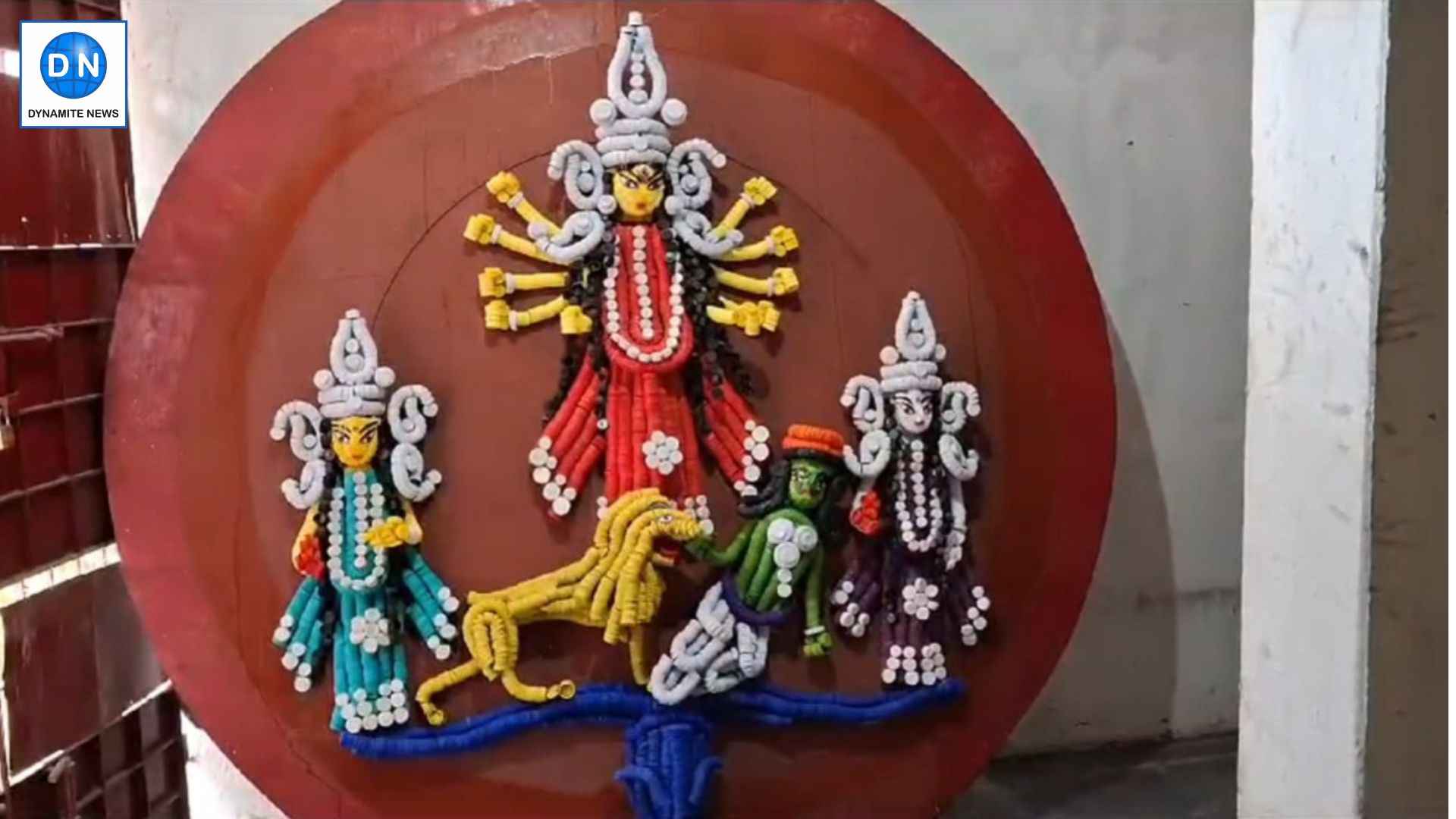
Dhubri: In a unique blend of art and environmental consciousness, an Assam-based artist from Dhubri is set to unveil a Goddess Durga idol fashioned out of over 8,000 discarded plastic bottle caps during the Navratri festival.
Awareness about environmental issues
The five feet tall idol symbolizes sustainability and aims to raise awareness about environmental issues.
Creating eco-friendly idols
The artist, known for creating eco-friendly idols for over a decade, has previously used materials like sugarcane waste and cycle tubes. His latest creation, to be displayed at Charmain Road’s Durga Puja Pandal, highlights the urgent issue of plastic pollution.
“This year’s idol carries a message about environmental change. Art should not only be beautiful but also meaningful,” artist said. His work has been widely praised for promoting sustainability.
Also Read |
PM Modi names India's longest bridge after Assamese legend Bhupen Hazarika

Idol is expected to spark conversations on art and environmental responsibility.
The artist said, “I have crafted the Durga idol from waste and this year’s theme of Navrarti festival is based on environmental consciousness. The idol is huge and it seeks to raise awareness about climate issues. Through my art, every year I try to send a message across and this year too the message about environmental issues is loud and clear.I am a school teacher and craft Durga idols from plastic waste products for exhibition. This plastic waste causes pollution. If we can create an item from waste and keep in our homes, then we can decrease pollution.”
Durga Puja also known as Durgotsava or Shaaradotsava, is an annual festival originating in the Indian subcontinent which reveres and pays homage to the Hindu goddess Durga, and also celebrates Durga's victory over Mahishasura.
Also Read |
Assam: Nearly four lakh people affected by flood
Celebrated in different state
It is particularly celebrated in the Eastern Indian states of West Bengal,Tripura, Bihar, Jharkhand, eastern Uttar Pradesh, Assam, Odisha and by Hindus in Bangladesh. The festival is observed in the Indian calendar in the month of Ashvin, which corresponds to September–October in the Gregorian calendar. It is a ten-day festival of which the last five are of the most significance.The puja is performed in homes and public, the latter featuring a temporary stage and structural decorations (known as pandals).
According to Hindu scriptures, the festival marks the victory of goddess Durga in her battle against the asura, Mahishasura. Thus, the festival epitomizes the victory of good over evil, though it is also in part a harvest festival celebrating the goddess as the motherly power behind all of life and creation.Durga Puja coincides with Navaratri and Dussehra celebrations observed by other traditions of Hinduism.
Though the primary goddess revered during Durga Puja is Durga, but celebrations also include other major deities of Hinduism such as Lakshmi (the goddess of wealth and prosperity), Saraswati (the goddess of knowledge and music), Ganesha (the god of good beginnings), and Kartikeya (the god of war).
Over the years, Durga Puja has emerged as an inseparable part of Indian culture with a diverse group of people celebrating this festival in their unique way while observing tradition. (with Agency inputs)







